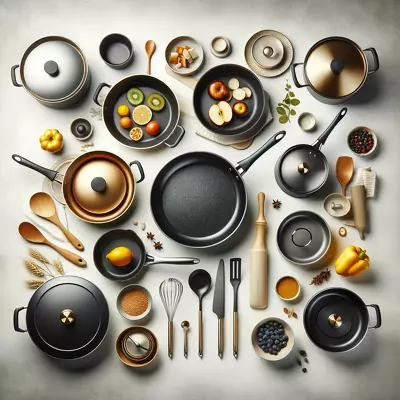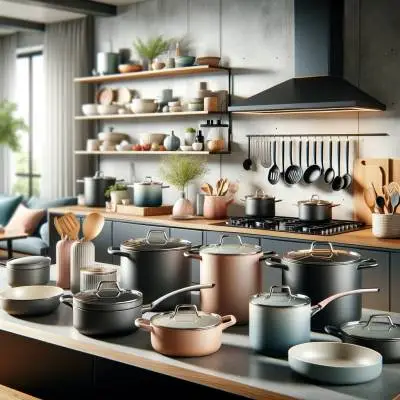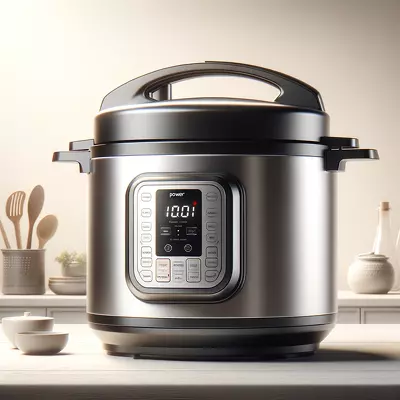From Non-Stick to Eco-Friendly: Deciphering the Pros and Cons of Ceramic Cookware
When exploring the world of kitchenware, one often encounters ceramic cookware, a popular choice for its aesthetic appeal and non-stick qualities. However, like any material, ceramic cookware has its own set of advantages and drawbacks. From its heat distribution properties to its environmental impact, understanding these factors is crucial for anyone looking to make an informed decision about incorporating ceramic cookware into their culinary arsenal.
I. Introduction to Ceramic Cookware
A. Overview of Ceramic Cookware in Modern Kitchens
In recent years, ceramic cookware has gained significant traction in modern kitchens. This type of cookware is revered for its unique combination of a rustic yet contemporary aesthetic, making it a popular choice among home cooks and professional chefs alike. Its composition, typically a metal body coated with a ceramic layer, offers a distinctive cooking experience. The popularity of ceramic cookware is not just a trend; it reflects a shift towards materials that are both functional and aesthetically pleasing in the culinary world.
B. Importance of Understanding Ceramic Cookware
Understanding the properties and performance of ceramic cookware is essential for anyone considering its use. Its impact on cooking methods, food quality, and overall kitchen dynamics is considerable. Choosing the right cookware is a decision that affects not only the taste and nutritional value of the food but also the ease and enjoyment of the cooking process. Therefore, a comprehensive understanding of the pros and cons of ceramic cookware is crucial for informed decision-making.
II. Pros of Ceramic Cookware
A. Non-Stick Surface Benefits
One of the most significant advantages of ceramic cookware is its non-stick surface. This feature allows for healthier cooking as it requires less oil or butter, reducing the fat content in meals. The non-stick surface also ensures easy food release, which simplifies the cooking process, especially for delicate dishes like eggs or fish.
B. Heat Distribution and Cooking Efficiency
Ceramic cookware is renowned for its excellent heat distribution. This quality ensures that food is cooked evenly, reducing the risk of undercooked or burnt spots. The efficient heat distribution also translates to energy savings, as it often requires lower heat settings to achieve the desired cooking temperature.
C. Health and Safety Aspects
Ceramic cookware is often preferred for its health and safety features. Unlike some non-stick coatings that contain potentially harmful chemicals like PFOA or PTFE, ceramic coatings are generally free from these substances. This makes them a safer choice, particularly when cooking at high temperatures where the risk of releasing toxic fumes from traditional non-stick surfaces is higher.
D. Environmental Friendliness
The environmental aspect of ceramic cookware is another advantage. The materials used in their manufacture are often more sustainable and less harmful to the environment. Additionally, the long lifespan of high-quality ceramic cookware means less frequent replacements, which contributes to less waste.
III. Cons of Ceramic Cookware
A. Durability Concerns
While high-quality ceramic cookware can be durable, it is generally more prone to chipping and cracking compared to other materials like stainless steel or cast iron. This susceptibility necessitates more careful handling and storage to maintain its longevity.
B. Limitations in Cooking Methods
Ceramic cookware is not suitable for all cooking methods. It is not typically recommended for high-heat cooking techniques like searing or stir-frying. Also, it is often not compatible with induction cooktops, limiting its usability in certain kitchen setups.
C. Maintenance and Care Requirements
The maintenance of ceramic cookware can be more demanding. Metal utensils and harsh scouring pads should be avoided to preserve the non-stick surface. Hand washing is also often suggested over dishwasher use, which can be inconvenient for some users.
D. Cost Comparison with Other Cookware
Ceramic cookware can be more expensive than other types of cookware. The initial investment might be higher, particularly for high-quality pieces. This cost factor is an important consideration for those on a budget.
IV. Balancing the Pros and Cons
A. Situational Suitability
When considering ceramic cookware, it’s important to assess its suitability for your specific cooking needs and habits. Its benefits, like the non-stick surface and even heat distribution, might be ideal for certain cooking styles, while its limitations could be a deal-breaker for others.
B. Long-Term Value
The long-term value of ceramic cookware is contingent upon its durability and maintenance. Investing in higher-quality pieces and adhering to care instructions can enhance its longevity, making it a worthwhile investment.
C. Lifestyle Considerations
The decision to choose ceramic cookware should also factor in lifestyle considerations. Ceramic cookware is an excellent choice for those who value ease of use and health-conscious cooking. However, for avid cooks who employ a variety of cooking methods, the limitations of ceramic cookware might be restrictive.
V. FAQs
Q: What makes ceramic cookware different from other types? A: Ceramic cookware is distinct due to its clay-based composition and often features a non-stick surface without the use of chemicals found in traditional non-stick coatings. It’s known for even heat distribution and is environmentally friendly.
Q: Can ceramic cookware be used on high heat? A: It’s generally not recommended to use ceramic cookware on high heat. Doing so can damage the non-stick coating and potentially weaken the cookware’s structure.
Q: How do I clean ceramic cookware? A: Clean ceramic cookware with warm, soapy water and a soft sponge or cloth. Avoid using abrasive cleaners or scouring pads, as they can scratch the surface.
Q: Is ceramic cookware oven-safe? A: Most ceramic cookware is oven-safe, but it’s important to check the manufacturer’s specifications for temperature limitations.
Q: Can I use metal utensils with ceramic cookware? A: It’s advisable to use wooden, plastic, or silicone utensils with ceramic cookware to prevent scratching the non-stick surface.
Q: How long does ceramic cookware typically last? A: With proper care, high-quality ceramic cookware can last several years. However, it may not be as durable as other materials like stainless steel or cast iron.
Q: Are there any health concerns associated with ceramic cookware? A: High-quality ceramic cookware is generally free from harmful chemicals like PFOA and PTFE, making it a safer option for cooking, especially at high temperatures where traditional non-stick coatings can release toxic fumes.
VI. Conclusion
A. Summary of Ceramic Cookware Pros and Cons
Ceramic cookware, with its non-stick surface, even heat distribution, and health-conscious materials, offers a modern solution for everyday cooking. However, its durability concerns, limitations in cooking methods, maintenance requirements, and cost need to be weighed carefully. These factors play a significant role in determining the practicality and longevity of ceramic cookware in one’s culinary collection.
B. Final Recommendations for Potential Users
For potential users, the decision to invest in ceramic cookware should be based on individual cooking habits, kitchen setups, and personal preferences. Those who prioritize healthy, low-fat cooking and appreciate aesthetic value might find ceramic cookware an ideal fit. However, for those who frequently engage in high-heat cooking or have a less careful approach to cookware handling, other options might be more suitable.
VII. Suggested Readings
Before exploring the world of ceramic cookware, it’s helpful to delve into literature that can offer deeper insights. The following are some recommended readings:
- “Ceramic Titanium Cookbook: 125 Delicious Non Stick Recipes” – This handbook, with its easy-to-understand instructions and over 125 recipes, is a great resource for anyone looking to explore the culinary possibilities of ceramic cookware.
- “The Big Book of Ceramics: A Guide to the History, Materials, Equipment, and Techniques” – An exhaustive introduction to ceramics, this book provides a comprehensive look at the materials, equipment, and techniques, making it a valuable resource for understanding the broader world of ceramics.
- “The Complete Home Potter: A Practical, Accessible Course in Pottery Skills and Techniques Including Wheel Throwing and Hand-Building” – While focusing more on pottery, this book offers valuable insights into ceramic materials and methods that can be applied to understanding ceramic cookware.
After exploring these readings, you’ll have a richer understanding of ceramic materials and their applications in cookware, helping you make more informed choices in your kitchen endeavors.






